Ching Dynasty (1644 - 1911)
In
1722, Chu Xian published eight volumes of “Inn Dien” (Seal Dictionaries.)
These are highly regarded as a new systematic analysis and study of seal making.
An imperial seal was a seal that the emperor used to indicate that a certain document was written in his own handwriting. Emperor Chian Long (1711-1799), for example, was famous for his literary achievements including calligraphy and had produced a large amount of texts affixed with his seal. When his calligraphy was carved into stone steles, the seal was copied onto the surface of the stone too.
“Handwriting
of Emperor Chian Long”
A Collector’s Seal was used by the emperors or artists to appraise and appreciate art. It was customary for collectors and connoisseurs of art to affix their seals on the surface of a scroll of painting or calligraphy to prove the authenticity.
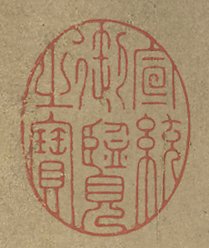 |
 |
| A Collector’s Seal of An Emperor | A
Collector’s Seal |
In
the Ching period, most official seals were bilingual with the Chinese
inscription on the right side and the Manchu on the left.
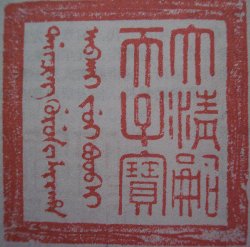
During
the later period of the Ching
Dynasty, painting, calligraphy, and seal making were influenced by the “Jin
Shu” studies, the research of ancient inscriptions. This brought new vigor and
interest to the art. Famous Zuan Shu calligraphers like Deng Thu-Ru, Wu
Run-Chih, and Zhao Chih-Chian were also good at seal making.
In
1904, "Xi Leng Seals Society" was organized. This was the first group
in China to publish books and scores of seals. Later in 1913, Wu Tsun-Shuo
became the first president of the Society.
Master
seal engravers of the Ching Dynasty
included the following artists. Most of them were also great calligraphers and
painters.
Deng
Thu-Ru (1743-1805)
Other
names: Deng Won-Bai, Deng Won-Bo
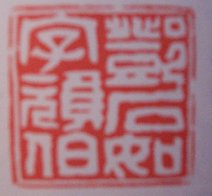
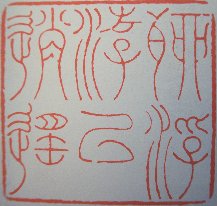

Wu Run-Chih (1799-1870)

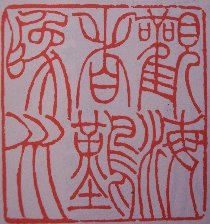

Zhao
Chih-Chian (1829-1884)
He was the first one to use Wei Bei for seal engraving at the side.
| 趙之謙,初名鐵三,字益甫,後改名之謙,字撝叔,號悲盦,冷君、支自、無悶、憨寮等。他長於北碑、篆、隸,並均能於
鄧完白 吳讓之 之後,別具面貌,用筆姿媚而力勢遒勁。篆刻早期受浙皖兩派影響,後來以秦漢為法,所作白文,深厚板重,朱文則仍有完白山人逸趣,渾樸雖不能及,然善於取勢,變化多而傳神,突破秦漢璽印的範疇,自成一格。 他之所以能如此,係於秦漢古璽之外,博採金石文字,當時新出土文物頗多,秦之權、量、詔版、漢之鐙、鈁、鏡、瓦、碑額、分隸及六朝造像,吳紀功碑、祀三公碑、禪國山碑...等皆為所用,自然新貌畢呈,篆刻一道,自完白山人開以書入印之門,印外求印之旨乃大行,至撝叔而大成,而撝叔之後,習篆刻者,亦皆由印中求印與印外求印兩條大路並行前進。 |

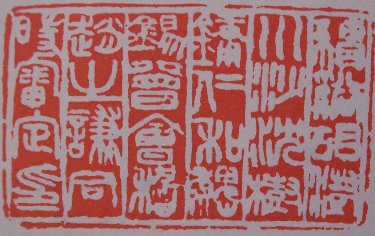
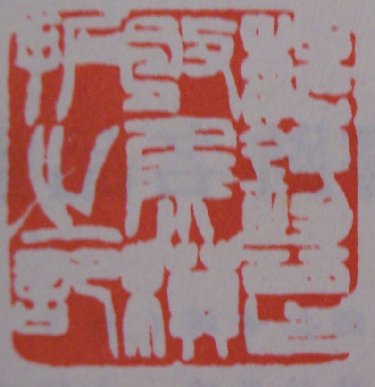
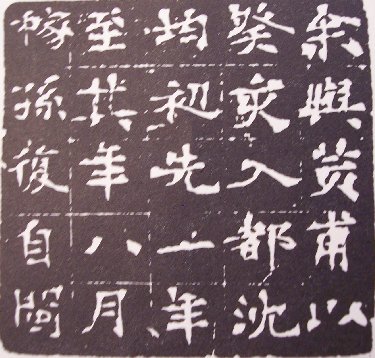
Huang Mu-Fu, aka Huang Shu-Ling (1849-1908)
.jpg)
.jpg)
.jpg)
.jpg)
.jpg)
.jpg)
.jpg)
.jpg)
.jpg)
The first nine phrases of Buddhist “Heart Scripture”
Wu Tsun-Shuo (1844-1927)
| 吳昌碩,浙江安吉人,後寓上海。海派。初名俊、俊卿,字昌碩、倉碩、倉石,晚以字行,號缶廬、缶翁、苦鐵、苦銕、石人子、石敢當、破荷、大聾、老缶、五湖印丐。齋堂為蕪亭飯青蕪室、銕函山館、禪甓軒、石人子室、紅木瓜館。中年後始作畫,擅花卉,取法徐渭、朱耷李繟,并受趙之謙、任頤的影響,畫風筆墨酣暢,色彩濃重,為「海上畫派」的傑出代表。能詩文,長書法,攻《石鼓文》,樸茂雄健,自成一格。精篆刻,能融皖、浙諸家與秦漢印精華,蔚為一代宗師,對後世影響頗深。存世有《缶廬集》。 |
.jpg)
.jpg)
.jpg)
.jpg)
.jpg)
.jpg)
.jpg)
.jpg)
.jpg)
.jpg)
Chi Bai-Thu (1844-1957)
| 齊璜。湖南湘潭人。原名純芝,字渭清,號蘭亭,後改名璜,字瀕生,號白石、借山吟館主者、寄萍老人、伯子、三百石印富翁、木居士、木人、借山翁、老苹、老萍、寄幻仙奴。齋堂為借山吟館、三百石印齋、白石艸堂、寄萍堂、八硯樓、寄苹吟屋、半聾樓。早年曾為木工,後以賣畫為業。五十七歲以後定居北京。擅畫花鳥、魚蟲、山水、人物魚蝦蟲蟹,天趣橫生,稱譽一時,為後世楷模。書工篆隸,取法秦漢碑版,行書源自米芾,饒古拙之趣。篆刻縱橫跌宕,自成一家。亦善詩文。 |
.jpg)
.jpg)
.jpg)
.jpg)
.jpg)
.jpg)